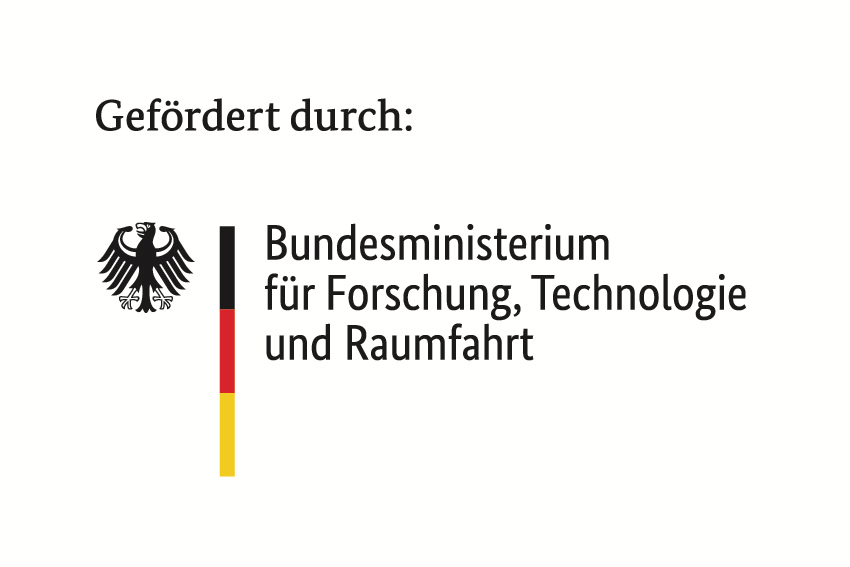Third-Party Funded Projects
The research group "Arbovirus Ecology" studies the spatial-temporal distribution of vectors and associated pathogens. Therefore the group is involved in several Third-Party funded projects.
- Vector control for emerging mosquito-borne viruses in the course of climate warming [2021-2024]
- Alternative mosquito control by adult traps (AIDA) [2021-2022]
- Diversity components in mosquito-borne diseases in face of climate change (DiMoC) [2020-2023]
- Near-real time decision tool to response against emerging mosquito-borne diseases (NEED) [2020-2025]
- Mosquitoes and mosquito-borne zoonoses in Germany (CuliFo2) [2019-2022]
Early Warning System for Mosquito-borne Diseases (EWSMD) [2018-2021]
Vector control for emerging mosquito-borne viruses in the course of climate warming [2021-2024]
The aim of the project is the evaluation of vector control measurements of West Nile virus vectors in the cause of climate warming, focusing on mass trapping of adult mosquitoes and the use of Bacillus thuringiensis israelensis (Bti) against aquatic stages in Germany. The project starts with a theoretical evaluation of different control strategies using a mechanistic population model. Laboratory and field experiments on the climate-dependent effectiveness of Bti at different concentrations are conducted. In combination with a model on the dynamics (water volume, temperature) of artificial waterbodies, a prediction model is developed based on the experimental data to estimate the required Bti concentration and frequency of application for an effective and sustainable control. Furthermore, mass trapping with CO2 traps will be carried out. Thereby, the main question is how many traps must be used for an effective reduction of the adult mosquito population. The control success is monitored by marking the mosquitoes with stable isotopes, which also allow to estimate the direction and distance of dispersal. Finally, based on the findings of the studies, different control strategies will be tested in the field and compared regarding their effectiveness.
Alternative mosquito control by adult traps (AIDA) [2021-2022]
The project "Alternative mosquito control by adult traps" (AIDA) is part of the research network "Epidemiology and Prevention of West Nile Virus Infection in Germany" (EPISODE). In the subproject AIDA, studies will be conducated at different locations in the main circulation area of West Nile virus (WNV) in eastern Germany (Saxony, Saxony-Anhalt, Berlin). Two mosquito control strategies are tested in the field. At all sites adult traps will be set up. At some sites, in addition to adult traps, control (B.t.i.)/removal from breeding waters will be conducted. The success of adult population reduction per site will be evaluated by parallel surveys in breeding waters and artificial resting places. At the same time, systematic sampling of breeding waters allows identification of the main breeding sites for mosquitoes of the genus Culex as main vectors of West Nile virus. Finally, in a dialogue workshop of the subproject, the collected expertise concerning zoonotic infectious diseases will be discussed including the public health service, in order to jointly develop future for the prevention of WNV.
Diversity components in mosquito-borne diseases in face of climate change (DiMoC) [2020-2023]
DiMoC will contribute to better understand the effects of biodiversity in mosquito-borne pathogen transmission. Through the analysis of different organisational (hosts, insects, viruses, human population), spatial (continental, regional, local, organism) and temporal scales (current conditions / future projections), DiMoC will test whether:
- Greater diversity in insect-specific virus hosted by mosquitoes results in a reduced relative risk of transmission of a virus through interactions within these populations;
- Mosquito diversity is influenced by interspecific interactions (e.g. competition) between species, which translates into different relative transmission risk;
- Greater host species diversity reduces the transmission risk due to the dilution effect;
- Changes in climatic conditions explain current large-scale patterns of pathogen, vector, and host diversity more than socio-economic conditions;
These results will allow to evaluate whether scenarios and models including climate, landscape diversity, and societal diversity can be used to quantify uncertainty in future trends of risks in pathogen transmission.
Near-real time decision tool to response against emerging mosquito-borne diseases (NEED) [2020-2025]
Mosquito-borne viruses are an emerging threat in Central Europe, which are a major challenge for researchers, stakeholders and the overall health care system for humans and animals. Thus, there is an urgent need to develop an evidence-based decision tool helping to select a cost-effective reaction to the local transmission risk. These responses can be very different, e.g. surveillance strategies, vector control or vaccination, which are all associated with different costs and outcomes regarding pathogen control. Therefore, the objective of the here proposed project is the development of a ‘Near-real time decision tool to response against emerging mosquito-borne diseases’. Due to the quickly changing spatial-temporal pattern regarding emerging and re-emerging mosquito-borne viruses, model results are updated near-real time by combining remotely available biotic and abiotic data with statistical models. The results are presented in a rapidly updated website, which provide different modelling products showing the spatial-temporal distribution of mosquito vectors and risk of introduction/transmission of associated viruses. The combination with estimates on the costs for different response scenarios will inform a decision tool, allowing the selection of cost-effective measurements for detection, prevention and control of mosquito-borne viruses.
Mosquitoes and mosquito-borne zoonoses in Germany (CuliFo2) [2019-2022]
Early Warning System for Mosquito-borne Diseases (EWSMD) [2018-2021]
In this project, we will use the entomological, epidemiological, climatological and geographical data from Germany and Greece already available and/or to be produced by our partners, key actors in the field of pathogen detection and vector control in Europe, in order to develop a common Early Warning System for mosquito borne diseases to be implemented and evaluated in both countries. Substantial exchange of know-how and expertise will take place between two major research institutes in the field arbovirology and transfer to two Major mosquito control operators in Europe for operational purposes.
The project's objectives are: 1. Connecting major European actors in arbovirology and mosquito surveillance and control from Germany and Greece 2. Reanalyze the epidemiological data from the severe WNV epidemic in Northern Greece since 2010 and the USUV outbreaks in Germany since 2011 so as to prepare accordingly Germany and Greece against WNV, USUV and other arboviruses. 3. Identify high risk areas and critical time intervals for WNV and USUV circulation following modeling from entomological data and epidemiological data already produced by the partners during the last years and to be further developed for the years 2018 and 2019 (Lühken et al. 2017). 4. Provide good practices, innovative tools and methods for the control of container-breeding mosquitoes in urban settings, with special consideration of Culex pipiens and Aedes albopictus, which are the major European vectors for existing (USUV in Germany and WNV in Greece) and/or threatening (WNV for Germany, dengue, Chikungunya and Zika for both countries) mosquito-borne diseases. 5. Produce, update and make available this information to concerned Public Health Institutions and/or other bodies of both countries, a functional webGIS, in which the users will have the possibility to view, explore, query, and display the periodical risk maps of the Early Warning System for mosquito-borne diseases.











